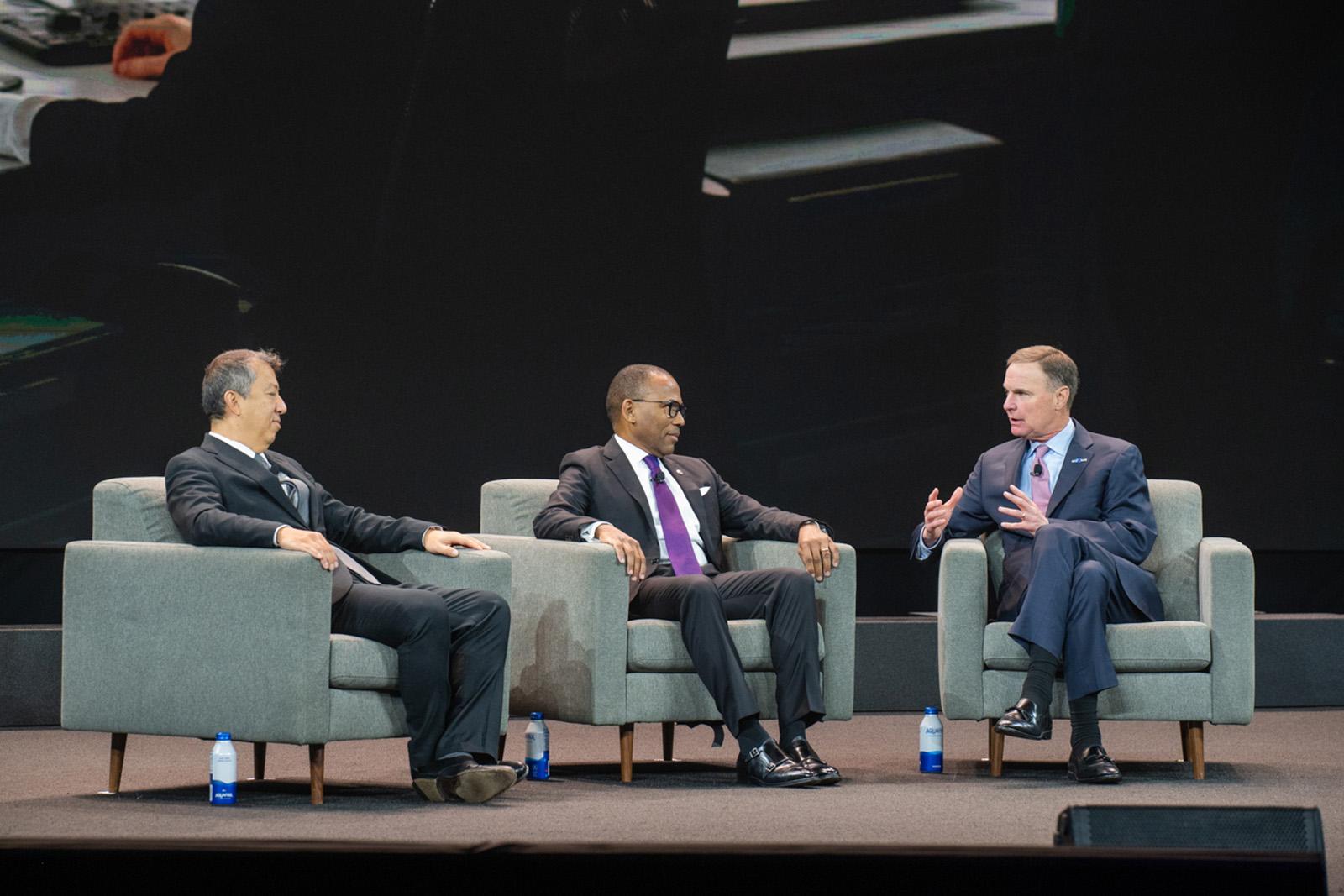
EASA Executive Director Patrick Ky (left) and Acting FAA Administrator Billy Nolen (center) spoke about AAM regulation at an NBAA panel moderated by NBAA President and CEO Ed Bolen (right).
ORLANDO—The leader of the European Union Aviation Safety Agency (EASA) said the regulatory agency is committed to opening Europe’s airspace to advanced air mobility (AAM) vehicles by 2024—a more focused approach than described by his FAA counterpart.
Speaking Oct. 18 at the NBAA Business Aviation Convention & Exhibition (NBAA-BACE), EASA Executive Director Patrick Ky said his agency is working with the French government to facilitate AAM passenger flights during the 2024 Summer Olympics in Paris. Ky appeared alongside Acting FAA Administrator Billy Nolen in a discussion moderated by NBAA President and CEO Ed Bolen.
“The French government is very excited about trying to use the Paris Olympics to showcase new forms of mobility, in particular advanced air mobility, and allowing people to be transported between Paris Charles de Gaulle and Le Bourget [airports] and the center of Paris,” Ky said.
“In order to do that, they have contracted out with a certain number of companies that we certify because those vehicles are going to transport passengers. We are quite advanced in terms of the certification path; we are quite optimistic about the possibility of the machines being certified by 2024,” he added.
Ky noted that EASA issued design guidance for vertiports that will serve electric vertical-takeoff-and-landing (eVTOL) aircraft earlier this year. Released in March, the Prototype Technical Specifications for the Design of VFR Vertiports describes the physical characteristics, required obstacle environment and visual aids, lights and markings of an operating site for vertical-takeoff-and-landing aircraft.
“We are working very hard with the French and other governments in Europe who have similar types of objectives, to have all the specifications for the infrastructure in which those aircraft are made to fly be ready,” Ky said.
The FAA in September released Engineering Brief 105, which it described as initial, interim guidance for building vertiport and vertistop sites for eVTOL aircraft. Nolen described a seemingly more cautious, broader approach to introducing AAM aircraft into U.S. airspace, with the 2028 Olympics in Los Angeles serving as a showcase.
“Patrick has a little bit more of a shorter timeline, but we’re both looking for the art of the possible,” Nolen said. “We’re thinking around the idea of ‘innovate 2028.’ You’ve got by then maybe three million-plus drones flying around in the national airspace system [and] hundreds if not thousands of advanced air mobility vehicles. One of the things we are thinking through is how to ensure that happens, how do we have the requisite level of electrification for charging [and] what does that look like from a vertiport [perspective]?”
Nolen said three factors will drive the introduction of AAM vehicles in U.S. airspace: certification of aircraft, which is already underway with “a couple of dozen [vehicles] in the pipeline”; establishing an operational framework and training requirements for new powered-lift category aircraft; and integrating AAM vehicles into the airspace system with other types of aircraft.
“It’s one of our grandest challenges,” Nolen said. “But leaders of every age are called upon to address challenges. This is ours and we’re up to the task.”
